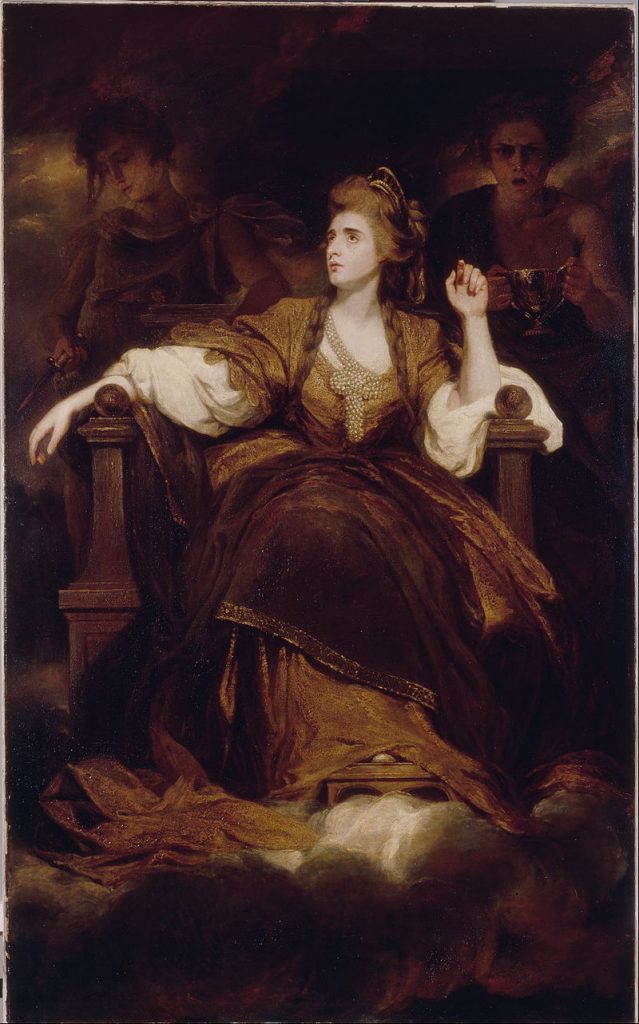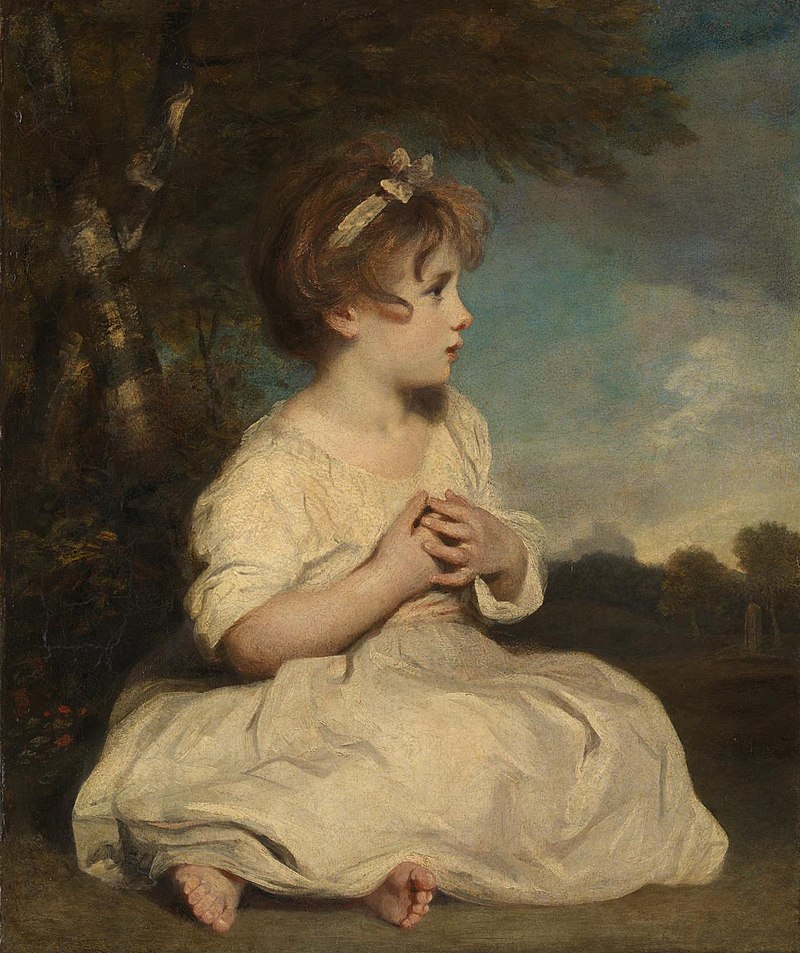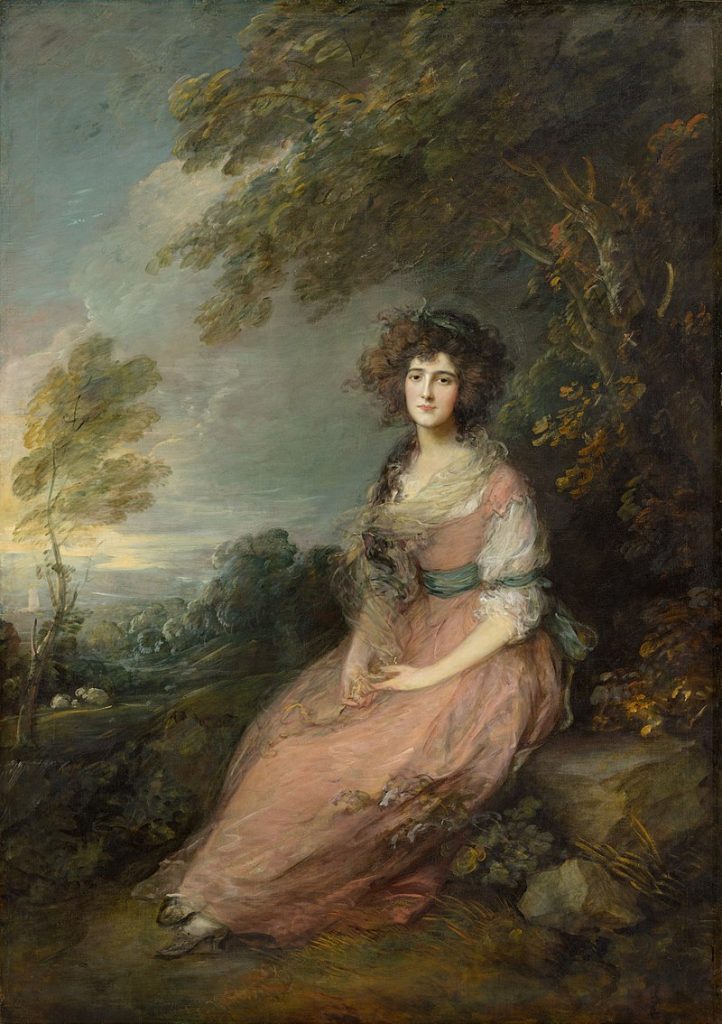
Sarah Siddons as the Tragic Muse, or Mrs. Siddons as the Tragic Muse, is a 1783–1784 painting by English painter Sir Joshua Reynolds. The 1784 version is in the Huntington Library art museum, while a 1789 reproduction from Reynolds’s studio is in the Dulwich Picture Gallery.
Reynolds and Gainsborough were two prominent English portrait painters who flourished during the 18th century. While both artists were active in the same period and shared similar subject matter, their approaches to portraiture and artistic styles differed significantly. Let’s delve into a comparison of Reynolds and Gainsborough’s portraiture.

The Blue Boy (c. 1770) is a full-length portrait in oil by Thomas Gainsborough, owned by The Huntington in San Marino, California.
- Style and Technique:
- Reynolds: Sir Joshua Reynolds was known for his grand, formal style of portraiture. He often portrayed his subjects in elaborate costumes and posed them in carefully composed, classical settings. Reynolds’ paintings were characterized by his mastery of capturing textures, fabrics, and details with meticulous precision. He employed a smooth, refined brushwork technique, and his portraits exuded a sense of dignity and stateliness.
- Gainsborough: Thomas Gainsborough, on the other hand, adopted a more natural and informal approach to portraiture. His style was marked by loose brushwork, vibrant colors, and a focus on capturing the essence and character of his sitters. Gainsborough’s subjects were often depicted in landscapes or outdoor settings, which added a sense of spontaneity and liveliness to his paintings.
- Treatment of Subjects:
- Reynolds: Reynolds’ portraits were often commissioned by the British aristocracy and high society, and he aimed to portray his sitters as dignified and noble figures. He employed a certain idealization in his depictions, emphasizing the virtues and elegance of his subjects. Reynolds’ use of poses, drapery, and props contributed to the construction of a narrative around the sitter, reflecting their status and achievements.
- Gainsborough: Gainsborough’s portraits leaned more towards capturing the personality and individuality of his subjects. His approach was less formal and more intimate, allowing his sitters to appear relaxed and at ease. Gainsborough had a keen eye for capturing fleeting expressions and gestures, imbuing his portraits with a sense of spontaneity and naturalism.
- Influence and Legacy:
- Reynolds: Sir Joshua Reynolds was a highly influential figure in the development of British portraiture. He established the Royal Academy of Arts in London and served as its first president. Reynolds’ emphasis on technical skill and his theories on the “Grand Style” of painting influenced many subsequent artists. His impact on the art world extended beyond portraiture, as his writings on art theory and criticism became foundational texts.
- Gainsborough: While Gainsborough was not as influential in the academic and institutional realms as Reynolds, his contributions to portraiture were significant. His more informal and naturalistic approach had a lasting impact, paving the way for a shift in the genre towards greater informality and personal expression. Gainsborough’s focus on capturing the individuality of his subjects influenced later portrait painters, including the Impressionists.

The Age of Innocence is an oil-on-canvas painting by Sir Joshua Reynolds, created in either 1785 or 1788 and measuring 765 x 638 mm. The sitter is unknown, but possibly, was Reynolds’s great-niece, Theophila Gwatkin (who was three in 1785 and six in 1788), or Lady Anne Spencer (1773–1865), the youngest daughter of the 4th Duke of Marlborough.

Mrs. Richard Brinsley Sheridan (1787) is an oil on canvas portrait painted by Thomas Gainsborough between 1785 and 1787. It was acquired by the National Gallery of Art in 1937. Mrs. Sheridan (Elizabeth Ann Linley) was a talented musician who enjoyed professional success in Bath and London before marrying Richard Brinsley.
In conclusion, Reynolds and Gainsborough approached portraiture with distinct styles and techniques. Reynolds’ formal and dignified portrayals contrasted with Gainsborough’s naturalistic and informal approach. Both artists left a lasting legacy, with Reynolds shaping the academic traditions of British portraiture and Gainsborough influencing the development of more personal and expressive approaches to the genre. Their contributions enriched the world of portraiture and continue to inspire artists today.
